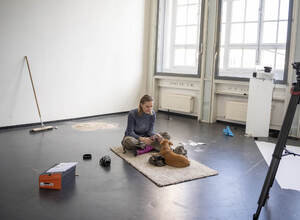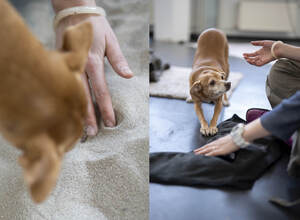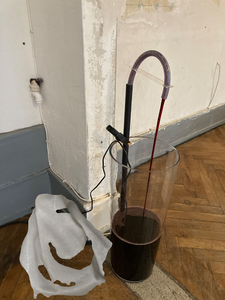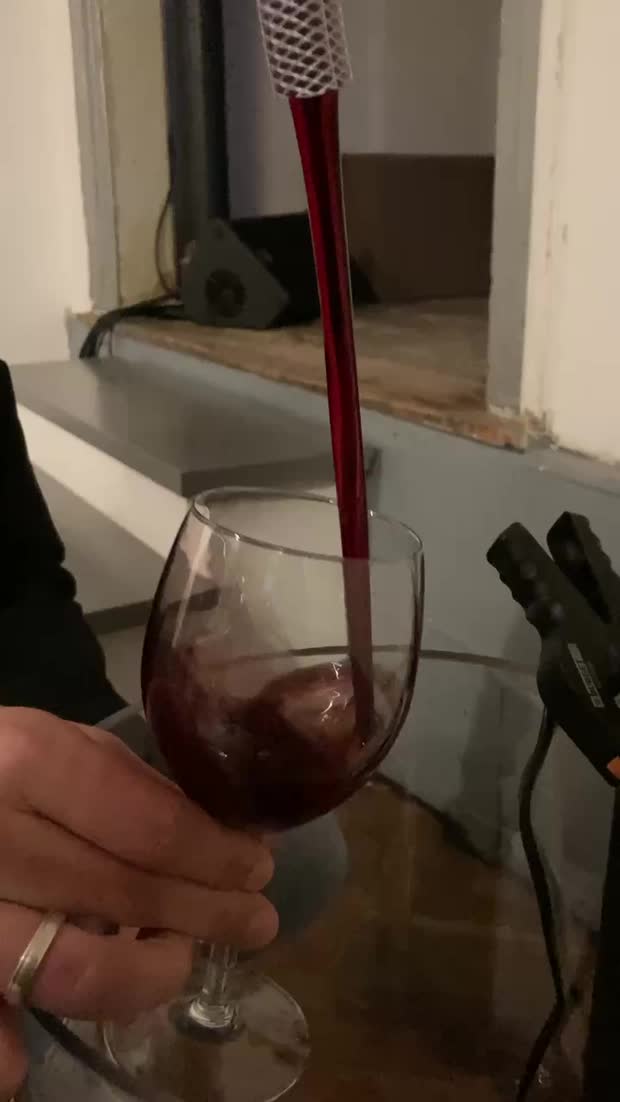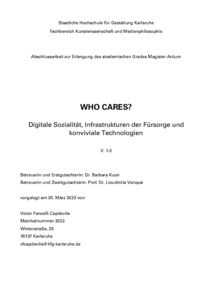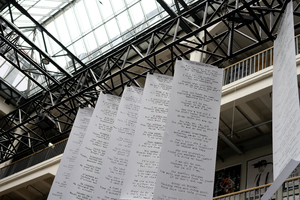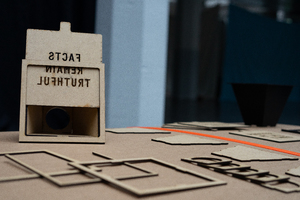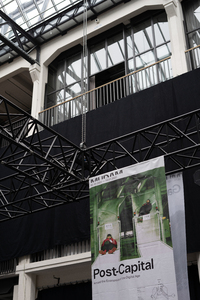"Druckerzeugnisse der HfG"
| Begriff | Druckerzeugnisse der HfG |
| Metakey | Freigabe Nutzung HfG (rights:usage_hfg) |
| Typ | Keyword |
| Vokabular | Rechte |
1592 Inhalte
- Seite 1 von 133
Workshop mit einem Hund
- Titel
- Workshop mit einem Hund
- Autor/in
- Kategorie
- Typ des Projekts/Werks
- Schlagworte
- Datierung
- Februar 2023
- Titel
- Workshop mit einem Hund
- Titel (en)
- Workshop with a dog
- Urheberrechtshinweis
- © Saskia van der Meer
- Freigabe Nutzung HfG
- Medienersteller/in
- Abgebildete Personen
- Projektleiter/in
- Semester
- Studiengang
- Typ der Abschlussarbeit
- Importiert am
- 05.10.2024
- Übergeordnete Sets
- 1
Workshop mit einem Hund
- Titel
- Workshop mit einem Hund
- Autor/in
- Kategorie
- Typ des Projekts/Werks
- Schlagworte
- Datierung
- Februar 2023
- Titel
- Workshop mit einem Hund
- Urheberrechtshinweis
- © Saskia van der Meer
- Freigabe Nutzung HfG
- Medienersteller/in
- Medien-Beschreibung
- Betty als Ton- und Kamerahund
- Projektleiter/in
- Semester
- Studiengang
- Typ der Abschlussarbeit
- Importiert am
- 05.10.2024
- Übergeordnete Sets
- 1
Workshop mit einem Hund
- Titel
- Workshop mit einem Hund
- Autor/in
- Kategorie
- Typ des Projekts/Werks
- Schlagworte
- Datierung
- Februar 2023
- Titel
- Workshop mit einem Hund
- Urheberrechtshinweis
- © Saskia van der Meer
- Freigabe Nutzung HfG
- Medienersteller/in
- Abgebildete Personen
- Projektleiter/in
- Semester
- Studiengang
- Typ der Abschlussarbeit
- Importiert am
- 05.10.2024
- Übergeordnete Sets
- 1
wine fountain (dt.: weinbrunnen)
- Titel
- wine fountain (dt.: weinbrunnen)
- Schlagworte
- Titel
- wine fountain (dt.: weinbrunnen)
- Titel (en)
- wine fountain
- Urheberrechtshinweis
- © Hanna Franke
- Rechtsschutz/Lizenz
- Freigabe Nutzung HfG
- Beziehung/Funktion
- Projektleiter/in
- Semester
- Studiengang
- Typ der Abschlussarbeit
- Importiert am
- 02.11.2024
- Übergeordnete Sets
- 1
wine fountain (dt.: weinbrunnen)
- Titel
- wine fountain (dt.: weinbrunnen)
- Schlagworte
- Titel
- wine fountain (dt.: weinbrunnen)
- Titel (en)
- wine fountain
- Urheberrechtshinweis
- © Hanna Franke
- Rechtsschutz/Lizenz
- Freigabe Nutzung HfG
- Medienersteller/in
- Beziehung/Funktion
- Alternativ-Text (de)
- Nahaufnahme eines Weinbrunnens, an dem zwei Gläser mit Rotwein gefüllt werden. Im Hintergrund sind Stufen und eine Soundbox zu sehen.
- Alternativ-Text (en)
- Close-up of a wine fountain where two glasses are being filled with red wine. Steps and a sound box can be seen in the background.
- Projektleiter/in
- Semester
- Studiengang
- Typ der Abschlussarbeit
- Importiert am
- 31.10.2024
- Übergeordnete Sets
- 1
Who Cares?
- Titel
- Who Cares?
- Titel (en)
- Who cares?
- Untertitel
- Digitale Sozialität, Infrastrukturen der Fürsorge und konviviale Technologien
- Untertitel des Projekts/Werks (en)
- Digital sociality, care infrastructure and convivial technology
- Autor/in
- Beschreibung (de)
- Die Hackerkultur verbindet Theorie und Praxis (nach hand-on Prinzipien) und einen neuen Ansatz für Kulturmaterialien (»information wants to be free«), der nicht nur eine andere Epistemologie, sondern auch einen neuen politischen Diskurs über Digitalität, Geräte und Menschen impliziert. Das Verhältnis zwischen Technik und Politik dieser Gruppe wird im ersten Kapitel analysiert: Zuerst wird die Entstehung proprietärer Software betrachtet, dann die Unterschiede zwischen Open Source und freier Software, und wie im letzten die Privateigentum und die soziale Beziehung zwischen Programmen, Benutzern und Entwicklern radikal in Frage gestellt werden. Später wird diese Beziehung anhand von Hanna Arendts _Die conditio humana_ in Bezug auf Arbeit, Herstellen und Handlen, Notwendigkeit und Freiheit, die die Bedingungen für Politik schaffen, weiter diskutiert. Im zweiten Kapitel wird das Konzept der Konvivialität (Ivan Illich) vorgestellt und diskutiert. Diese Idee wird später in der Wartung als infrastrukturelle Vorsorge weiterentwickelt und als ein zentrales Element digitaler Technologien vorgeschlagen, das weiter diskutiert werden sollte. Diese Konstellation des Denkens und Handelns, des Spielens und Lernens, des Experimentierens und der Übernahme von Verantwortung sowie der Politik und der sozialen Beziehungen sollte in der Technologiedebatte eine wichtige Rolle spielen.
- Beschreibung (en)
- Hacker culture connects theory and praxis (following hand-on principles) and a new approach to culture materials (»information wants to be free«), that implies not only a different epistemology, but also a new political discourse on digitality, devices, and people. The relation between technic and politic of this group is analyzed in the first chapter: first focusing on the emergence of proprietary software; then considering the differences between open source and free software, the last one challenging radically the notion of private property and the social relation among programs, users, and developers. Later on, reading Hanna Arendts "The Human condition", the relation will be further discussed in terms of labor, work and action, necessity and freedom, which establish the conditions for politics. In the second chapter, the concept of conviviality (Ivan Illich) is introduced and discussed. This idea is later developed in maintenance as infrastructural care and proposed as a central element of digital technologies that should be further discussed. This constellation of thinking and acting, playing and learning, experimenting and taking responsibility, as well as politics and social relations should play a prominent role in the debate about technology.
- Typ des Projekts/Werks
- Schlagworte
- Datierung
- 30.09.2023
- Sprache
- Titel
- Who Cares?
- Titel (en)
- Who Cares? [Main Text]
- Urheberrechtshinweis
- Víctor Fancelli Capdevila
- Rechtsschutz/Lizenz
- Freigabe Nutzung HfG
- Medienersteller/in
- Medien-Beschreibung
- Text in PDF, Version 1.0
- Medien-Beschreibung (en)
- Text in PDF, Version 1.0
- Projektleiter/in
- Semester
- Studiengang
- Typ der Abschlussarbeit
- Importiert am
- 30.11.2023
- Übergeordnete Sets
- 1
Werkschau
- Titel
- Werkschau
- Autor/in
- Titel
- Werkschau
- Urheberrechtshinweis
- Bob Reinert
- Rechtsschutz/Lizenz
- Freigabe Nutzung HfG
- Beziehung/Funktion
- Projektleiter/in
- Semester
- Studiengang
- Typ der Abschlussarbeit
- Importiert am
- 06.03.2024
- Übergeordnete Sets
- 1
Werkschau
- Titel
- Werkschau
- Autor/in
- Titel
- Werkschau
- Urheberrechtshinweis
- Bob Reinert
- Rechtsschutz/Lizenz
- Freigabe Nutzung HfG
- Beziehung/Funktion
- Projektleiter/in
- Semester
- Studiengang
- Typ der Abschlussarbeit
- Importiert am
- 06.03.2024
- Übergeordnete Sets
- 1
Werkschau
- Titel
- Werkschau
- Autor/in
- Titel
- Werkschau
- Urheberrechtshinweis
- Bob Reinert
- Rechtsschutz/Lizenz
- Freigabe Nutzung HfG
- Beziehung/Funktion
- Projektleiter/in
- Semester
- Studiengang
- Typ der Abschlussarbeit
- Importiert am
- 06.03.2024
- Übergeordnete Sets
- 1
Werkschau
- Titel
- Werkschau
- Autor/in
- Titel
- Werkschau
- Urheberrechtshinweis
- Bob Reinert
- Rechtsschutz/Lizenz
- Freigabe Nutzung HfG
- Beziehung/Funktion
- Projektleiter/in
- Semester
- Studiengang
- Typ der Abschlussarbeit
- Importiert am
- 06.03.2024
- Übergeordnete Sets
- 1
Werkschau
- Titel
- Werkschau
- Autor/in
- Titel
- Werkschau
- Urheberrechtshinweis
- Bob Reinert
- Rechtsschutz/Lizenz
- Freigabe Nutzung HfG
- Beziehung/Funktion
- Projektleiter/in
- Semester
- Studiengang
- Typ der Abschlussarbeit
- Importiert am
- 06.03.2024
- Übergeordnete Sets
- 1
Werkschau
- Titel
- Werkschau
- Autor/in
- Titel
- Werkschau
- Urheberrechtshinweis
- Bob Reinert
- Rechtsschutz/Lizenz
- Freigabe Nutzung HfG
- Beziehung/Funktion
- Projektleiter/in
- Semester
- Studiengang
- Typ der Abschlussarbeit
- Importiert am
- 06.03.2024
- Übergeordnete Sets
- 1
